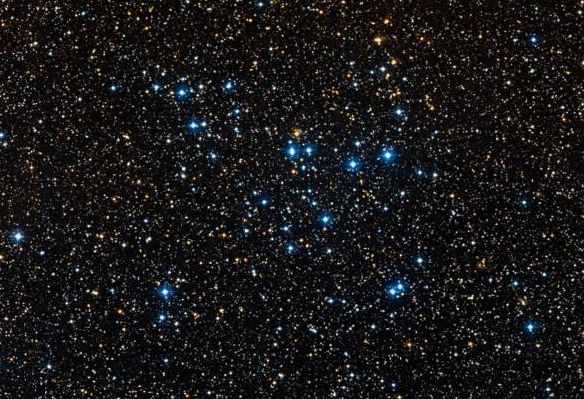NGC 7243, also known as Caldwell 16, is an open star cluster located in the constellation Lacerta. Positioned about 2,500 light-years from Earth, NGC 7243 is a relatively close and accessible cluster in our galaxy, likely situated within one of its inner spiral arms. It can be observed from both the Northern Hemisphere and parts of the Southern Hemisphere, although it is more easily visible from the north due to Lacerta’s position.
Discovery
NGC 7243 was first catalogued by the German-British astronomer William Herschel in 1788. Nearly two centuries later, it was included in the Caldwell Catalog by Sir Patrick Caldwell-Moore, who compiled a list of 109 interesting celestial objects for amateur astronomers. The Caldwell designation helped increase awareness of this relatively obscure cluster and cemented its popularity among amateur stargazers.
Physical Characteristics
NGC 7243 is a moderately young open cluster, with an estimated age of around 100 million years. It formed from a single molecular cloud, and its stars are bound by a shared origin rather than gravitational forces. The cluster contains dozens of stars, mostly blue and white, indicating their relatively young age and high temperatures compared to older, redder stars found in older clusters. However, the cluster also includes some more evolved stars that are beginning to transition away from the main sequence.
The shape of NGC 7243 is somewhat irregular, with stars spread out in a loose and spacious arrangement compared to denser clusters. It spans roughly 30 arc minutes across the sky, which is about the same apparent size as the full Moon. Though it is not densely packed, the arrangement of its stars forms a distinct and recognizable pattern, with bright and relatively widely spaced stars that create a unique visual structure in telescopic views.
Observation
With an apparent magnitude of 6.4, NGC 7243 is just beyond the range of naked-eye visibility under typical conditions. However, binoculars or a small telescope easily bring it into view, especially under dark skies. Through a telescope, the cluster’s blue and white stars can be appreciated in greater detail, and its spread-out, open structure is clearly defined.
NGC 7243 is best observed from the Northern Hemisphere during the autumn and winter months, particularly from September to January, when the constellation Lacerta is well-placed in the evening sky. Optimal viewing times are typically between November and January, when Lacerta reaches its highest point, making it easier to observe without atmospheric interference. Observers can locate the cluster with the help of a star chart or astronomy app, and its relatively bright, well-defined stars make it a favourite target for amateur astronomers and astrophotographers alike.




